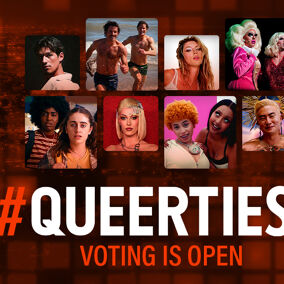
Gender identity, simply put, is how a person perceives and experiences their own gender. It’s all about how we feel on the inside and how we express ourselves and goes beyond the traditional binary notions of male or female sexes. That’s where terms like AMAB and AFAB come in.
We can use terms like AMAB or AFAB to discuss gender identity in a respectful way, while also recognizing the diversity of each others’ experiences.
What do AMAB and AFAB mean?
AMAB stands for “Assigned Male at Birth” and AFAB stands for “Assigned Female at Birth,” and the acronyms can be pronounced as two-syllable words, “AY-MAB” and “AY-FAB.”
The term “assigned” implies that someone assigned a gender to an individual at birth, typically based on a physical examination of their body.
This term helps to emphasize how arbitrary and superficial this designation can be, while also recognizing that it can have real implications for how people understand their own gender identities and potential healthcare needs.
Sex vs. Gender vs. Gender Identity

Before we go further, it’s important to note the difference between sex, gender, and gender identity.
Sex refers to your biological and physiological traits, while gender is a term that describes how society understands these traits. Gender identity is an individual’s internal experience of their own gender, which may or may not align with the sex they were assigned at birth.
What gender identities fall under AFAB/AMAB?
Technically speaking, all gender identities can be classified using AFAB or AMAB labels including:
- Transgender people
- Nonbinary people
- Genderfluid people
- Intersex people
- And even cisgender people
The terms AMAB and AFAB enable anyone to describe the physical traits of the body they were born into in conjunction with their gender identity. For instance, AFAB describes a cisgender woman, while AMAB describes a transgender woman.
These terms can describe someone regardless of their perceived gender or how they choose to express themselves.
How do AFAB and AMAB differ from cisgender and transgender?
AFAB and AMAB are not identities, but rather terms used to describe someone’s assigned sex at birth. These terms can be used in conjunction with other gender-related terms such as cisgender or transgender, which refer to a person’s identity rather than their assigned sex.
“Cisgender” describes individuals whose gender identity aligns with the sex assigned to them at birth, while “transgender” refers to individuals whose gender identity differs from the sex assigned to them at birth.
As mentioned earlier, all gender identities can be categorized using AMAB and AFAB labels. However, it’s important to note that these terms should not replace the language used to describe a person’s true identity.
For some people, the sex they were assigned at birth may not accurately reflect who they are and what gender they identify with. This disconnect can have a profound impact on how they view themselves and their relationship to the world around them.
AFAB/AMAB vs. FTM/MTF
It’s also important to note that AFAB and AMAB are not the same as FTM (Female-to-Male) or MTF (Male-to-Female).
FTM and MTF are outdated terms for describing gender transition, while AFAB/AMAB are labels for assigned birth sex.
For example, when describing a transgender man, using “female-to-male” (FTM) implies a transition from identifying as a woman to identifying as a man. The label AFAB, on the other hand, merely acknowledges that their physical sex was assigned as female at birth.
The importance of AFAB/AMAB terminology in healthcare

In healthcare situations, providers may use AFAB and AMAB, as well. While doctors can make many medical diagnoses without knowing a patient’s assigned sex, some conditions may require the use of this information, including potential requirements for hormone therapy or surgery.
It can be essential for healthcare providers to understand a patient’s assigned sex at birth in order to provide them with the best care possible. Nevertheless, using incorrect pronouns or misgendering can be disrespectful, invalidating, and lead to distress and potential harm to an individual’s mental health.
Related*


Queer people face discrimination in health care. Here are the people changing that
These queer healthcare heroes were inspired by their personal experiences to become advocates and providers.
Conclusion
The terms AFAB and AMAB don’t replace a person’s true gender identity; however, these terms can be useful in helping us understand how someone’s gender identity may differ from their assigned sex at birth. And in healthcare situations, these terms can help provide important insight into a patient’s healthcare treatments.
By understanding and using terms like AFAB/AMAB correctly, we can create a more inclusive and respectful environment for everyone.
Subscribe to the Queerty newsletter to stay up-to-date on the latest developments in the LGBTQ+ community and learn more ways to support others.
Don't forget to share:



































































ShaverC
It’s ridiculous. People are not assigned a “gender” at birth. They are born either male, or female… and no we’re not talking about intersex either.
ShaverC
Dr Sarah, A gender identity does not exist. I’m not talking about truly trans people who are diagnosed and have therapy and are more than free to transition in adulthood, then then that person becomes a trans-woman or trans-man. There is no such thing as “cis”… it’s man or woman. There is no such thing as non-binary. It’s biology.
still_onthemark
‘The term “assigned” implies that someone assigned a gender to an individual at birth…’
It should be ‘sex’ in that sentence instead of ‘gender,’ right Queerty? You guys make a big fuss about how sex and gender are different, and then almost immediately you get them mixed up!
‘…typically based on a physical examination of their body.’
Yeah, it’s not easy to interview a baby about this stuff.
Louis
To me, it’s just sex and gender.
Sex (male/female) cannot be changed as it’s based on your chromosomes (eg XY or XX). This is why, I believe, the term in the 90s was “transsexual” and that ceased being used because sex cannot be changed.
Gender (man/woman/non-binary) is a social construct based on someone’s physicality. Someone might be called a woman because they have breasts and a higher voice. But, in my opinion, that is not what dictates one’s gender. Ones gender (to me) is chosen by the individual based on how they feel internally and this is why the accepted term is now transgender rather than transsexual.
In my view, nobody should ever assume someone’s gender because you don’t know how they feel internally until they tell you. In an ideal world, we would refer to everyone as they (so as to not assume gender) until such a time as an individual has confirmed their pronouns.
ShaverC
Just because you “feel” like something doesn’t make it real. I feel like I’m in my early 30’s, but when I look in the mirror I clearly am not.
S.anderson
I, for one, would love to see more articles like this. They just demonstrate that when the Trans Movement puts the Trans doctrine down in print, it becomes all-too-clear that it doesn’t hold up. You tried Helms, bless your little heart. But you couldn’t resist trying to blur sex/gender/gender identity in one paragraph, while strictly separating them in another when it was required to guide ignorant minds into seeing things as you wanted. You just made it all pop out. and you made your contrived narrative all-the-more obvious.
Sex is the term for identifying the male or female anatomy. This is identified through examination, not “assignment”. There is no “assignment conspiracy”, malicious or otherwise. Nor are there other sexes besides male and female. Even intersex and chimera people are male or female, or an abnormal mix of those two sexes and no others.
In current parlance, “gender” really means “gender identity”, which is about behavior and traits which either sex may exhibit. Gender identities are based upon Traditional Sex Roles AKA Gender Stereotypes. TSR/GS are a variety of cultural constructions which represent “ideal” behavior assigned to people according to their sex at a given place and time.
Stop biatching about one’s sex being “assigned” when it’s really TSR/GS that are assigned to all of us. Often TSR/GS are assigned (and imposed) maliciously, unlike sex. They are roles which we LGBTQ folk do not comply with for a variety of reasons. LGB folk are noncompliant for different reasons than TQ folk. We should challenge and expose TSR/GS for their failure to properly describe normal, diverse humans, and for their being used as a basis to punish those who don’t conform.
Confoundingly, the Trans Doctrine is actually to uphold TSR/GS and use them, unquestioningly, to assign gender identities to their followers. And, in a feat of mental gymnastics, to equate their affinity of, for instance, dresses and lipstick with the idea that they ARE women, who can only be female, and SHOULD have a vagina. Lordy.
I’m all for letting people associate socially according to their likes and interests. If you have friends and loved ones who are female boys or male girls, then you’re on the right track. They don’t need to take injections or go under the knife to be accepted by others. Transwomen are women! Transmen are men! No problem there. Sex and gender identity USUALLY match, but don’t need to. And while it just won’t do to rebuild all of human culture to constantly walk on eggshells in case there is transgender person in earshot (who we currently know to comprise .4 of one percent of humanity), we can treat them as valid and beautiful human beings. But, no more of this gaslighting, please.
nm4047
WTF? How does this even rate a mention on any site. Catering/pandering (open to discussion which it is) for LESS than 1% of the (western) world population.
winemaker
Newsflash! You are born biologically male of female, there’s no third sex. This is just more liberal nonsensical BULLSHIT rammed down out throats to confuse mainly children by the liberal slugs doing a damned fine job of destroying this great country with their idiotic ideas and making it the laughing stock of the free world. Who in their right mind keeps voting for this nonsense and the nincompoops that avow this crap ? And yes I’m gay and proud to be gay but this has gone way too far. I call a female she or her and a man he or him, using the correct grammatical sentence structure and terms when appropriate. Sheesh, is this really up for conversation?
abfab
Let’s consider the source. That being you, wine. So yes, and you do add so much to the conversation. You’re brilliant! Keep it up. Keep it going.
To the Gay world, if you’re listening, this is the sort of lunatic we have to put up with every day. The right wing. Right there. RIght in front of you.
inbama
@abfab
After reading all the above excellent posts speaking the truth, it’s clear to anyone that the only lunatic is you.
Trans people live in one gender but are of the opposite sex; that is why they are trans. None of us are saying you shouldn’t live your life as you need to. But the activists who think they can bully all of society into living in their imaginary world are going to get us all committed to mental institutions.
still_onthemark
Now we know the meaning of AFAB, but what is the meaning of ABFAB?
Diplomat
There are no rooms left at the institutions. All the abfabs have taken up residency.
And one may wonder why the T needs to go so we can get back to LGB basics. These loons are going to lose us gay marriage unless we get on it.
abfab
Nice that you know about the no-vacancies at your health institutions. You’re a boring letch. A troll.
Diplomat
I know it’s hard being a loser, but you bring it on yourself. You can’t even counter with rational thought, so you burp and fart your way through the comments section. That won’t bring you acceptance, but the opposite. You’re demeaning your niece with this malaligned attackful use of the english language. You have no gold stars here. We’re fully on to you. If you ever wake up let’s just say… we’re not holding our breath.
decrans
This post illustrates several things about the far-left LGBTQ+ movement. No. 1: They want the majority of flyover Americans to adopt terminology they mess up themselves. No. 2: They concede to the pre-established rules of gender and sexuality with “some conditions.” You’ve already lost the argument of making transgenderism real. There’s that admission of biological reality.
Mister P
Why is it so important to commenters here to deny and invalidate their existence?
The trans community exists and no one is asking anyone to believe it or not. Just accept it.
inbama
No one denies their existence.
What we refuse to do is continue to buy into this gender Studies/Queer theory mashup that centers human existence on trans people and denies the absolute fact that biological sex shapes our bodies, our minds and our life experiences. Biological sex is not something of no consequence “assigned at birth.”
Cross-sex hormones and surgery can change secondary sex features, but it does not change our sex.
We are seeing the horrendous backlash against lesbians, gays and trans people, because we are pushing these dishonest social theories into schools, and even trying to pass laws to jail people who fail to use nonsensical pronouns like “they” and “them.”
Get over the lies you peddle that are putting a target on all of our backs.
abfab
@Mister P………..It’s so important to them because this rage and fear is the Republican platform. It’s all they got–it’s all they’ve ever had for a very long time now. They enjoy ”don’t saying” many things from modern society.
The Anita Bryant Brigade is here. This was her playbook, too.
Mister P
No purchase necessary. You don’t have to buy anything. We need to make a place in this world for everyone.
Where in America is anyone being jailed for grammar errors or poor manners?
S.anderson
@MisterP: A quick skim through page 1 shows that NY and MI have processes which lead to “civil fines and penalties” and “5-Year Prison Sentence, $10,000 Fine” respectively. While it’s certainly desirable to fight bullying and harassment, these laws only come into play when the plaintiff or defendant is trans.
S.anderson
@Mister P: Just g search “legal penalties for misgendering” and you’ll see endless examples of transgenders and their allies pushing for exactly this kind of law, and when successful, testing the opportunity to punish people who speak transgender heresy (often failing on free speech grounds). So don’t suggest that this isn’t a desire of the trans movement nor that it is happening.
abfab
@S.anderson
Let’s all hope you get the max fine and prison time when you act like an asshole and break the laws that you now admit to knowing about.
Either way, you’re a pushy queen and a lousy human being. You must be so pleased with yourself.
RIGay
I worked for a better part of my career for the worlds largest acronym generator; IBM. After a while, I just tuned them out because they generally mean nothing except to make one engineering group feel good about what they did. In the long run, whatever acronym they came up with will be obsolete by the next generation of code.
This is just more of the same. This is also why I’ve stopped tacking on the alphabet after LGBT, I just conclude that line with a “+” sign. It’s pointless because either you will PO someone for NOT getting it right or someone will step in and correct the order that the alphabet has to be in for the style of the moment.
Of course, AbFab will never go out of style.
mailliw110
I just treat everyone the same way I would like to be treated. Until they show me that they are just an azz, that is. I’m still trying the remember what a “cis” is. You’re either gay or straight. You like dick or the other (I don’t say the female part, because that’s just gross!). Now, don’t get me wrong, I want everyone to be happy with who they are.
abfab
Who pumps out these silly articles?
Wrong or right, what’s relevant here is the toxic GOP rage which is nothing more than repetiteve bullshit and desperation. You must be exhausted.
still_onthemark
If even YOU think this article is silly, it’s hard to imagine anyone liking it.
This is the first I ever heard that the terms MTF and FTM are “outdated.” Which means we’ll probably be seeing MTF and FTM five and ten years from now.
abfab
MTM…Mary Tyler Moore
inbama
still_onthemark
They want those terms outdated because they want you to believe that male and female is not biological but neurological.
The purpose behind this is so that heterosexual transvestites and gynandromorphs can keep their penises while declaring themselves lesbians, and then call the women who reject them TERFs and bigots.
Most transsexuals couldn’t care less about all this hogwash and often resent it.
DennisMpls
Ian Helms, I want to thank you for your terrific, well-reasoned and well-expressed article on what for almost everyone is a very difficult topic. The concept of sex vs. gender is extremely complex, and people are either unwilling or unable to think the issues through calmly and with an open mind.
There are aspects of life that can essentially be considered to be proven facts. Then ther are other things that depend on a societal acceptance of how humans are going to react to and classify things. Sex is the former, and gender is the latter. There are indeed essentially two sexes, denoted by specific scientifically valid physical realities, from chromosomes to physical characteristics. (The presence of the very few intersex people doesn’t invalidate this concept.)
Our society today is evolving in such a way that it recognizes the importance of the concept of gender as something distinct from sex. Since the difference has become increasingly apparent we as a society are evolving words and concepts to deal with that difference. And since this is such a MAJOR change on a societal level it obviously evolves in fits and starts, with conservatives especially being resistant (as they always are) to any new idea that challenges their world view.
But in this case it’s interesting to me that so many liberal/progressive types, and especially gay people, have been so resistant. I totally understand it in the sense that transgenderism is a distinct concept from homosexuality, and people see this new controversial issue to some degree taking over THEIR issues. I do understand that.
But I find so much of the resistance to be a product of people being either unwilling or unable to honestly think through the issues. My feeling in that regard is reinforced by the comments on this thread to this non-polemical, straightforward explanation by Mr. Helms. I honestly don’t see any signs that ANY of the commenters have actually devoted thought to what Helms is saying, or to examine whether any of their preconceptions could use a bit of rethinking.
To me it’s this simple. There are essentially two sexes. When someone is born, they are “assigned” a gender based on observable physical characteristics. Don’t get hung up on the word “assigned.” You could just as well say “assumed”. Society over time has evolved a set of characteristics and preferences expected from the child based on the “assigned” sex. However, over time it has become increasingly apparent that some kids don’t conform to those expectations. That lack of conforming occurs along a spectrum, going as far as people who passionately feel they were born in the wrong body.
In the past, society demanded that those people shut up and play along with expectations. Today, a growing segment of society says “NO!” This segment is pushing society to accept the reality, and to give people the FREEDOM to live as their gender identity wants them to live. As a gay person who watched society gradually allow me to reject the accepted norms about sexuality and live my truth, I think it’s time for society to allow people who identify outside the accepted norms of gender to live their truth.
abfab
Truth! Thanks for writing this. And so well. My direct connection to all of this stems from my nephew, who then became my niece. That’s all I have about that for now. Thanks, Dennis.
S.anderson
@DennisMpls: I found this article to be slick, smug, and filled with mental acrobatics. I found myself mouthing “WHAT?!” more than once. It’s grammar propaganda aimed at the ignorant who think they’re learning The Truth from someone speaking with the confidence of an Expert.
I think a big reason LGB people are “resisting” TQ Doctrine is because …it’s doctrine. It’s a “New Truth” which asserts that it explains homosexuality better and, if you’re “right thinking”, you’ll accept it like good little boys and girls.
LGB people fought for decades to teach that they are normal, and their homosexuality is not due to “confusion” about their “sex” or gender. That homosexuality is perfectly normal for males, females, boys, girls, men, women to experience. That homosexuality doesn’t forfeit one’s legitimacy as a boy, girl, man, woman, though there are malicious people who assert exactly that.
But trans/queer doctrine suggests that yes, it IS all about sex/gender disturbance. When LGB and TQ people are really NOT the same. They’re just viewed as the same and treated as the same by haters. There’s only so far LGB can walk together with TQ until the harm outweighs the benefits.
abfab
Now are you talking about what it is you know
Or just repeating what it was you heard
Someone told you just exactly what to say
And you know, you know that’s only one set
Of words
You got to play on love.
I’ve heard people say it a thousand times
In a thousand different ways
I’ve heard people play it a thousand times
And they know that’s the only way to play
You been a reading it without living it
Now that’s the golden prison we can always find
Living in stories and living in books or
We can live and leave all the stories behind.
Grace Slick
Play On Love
inbama
Or you can cherry-pick stories and endlessly browbeat people who have stories different from the ones you have chosen to tell.
That’s your stock in trade.